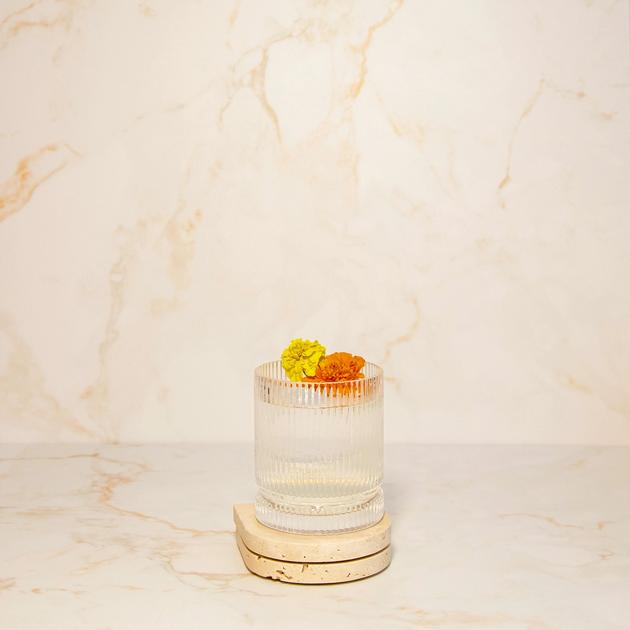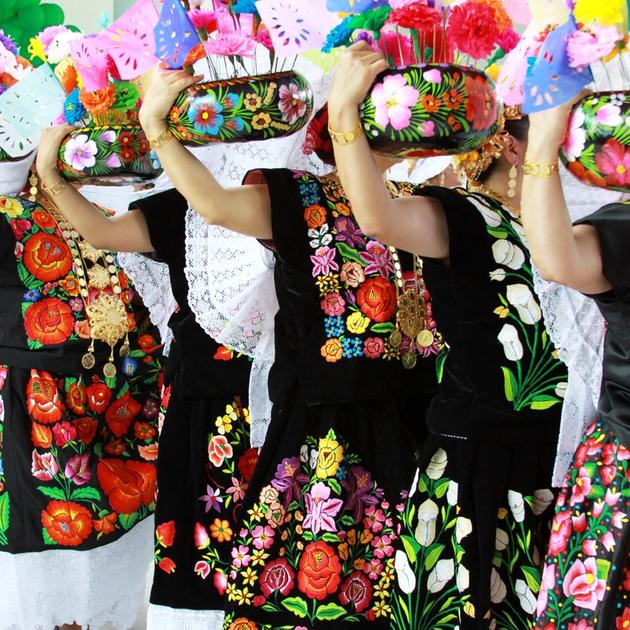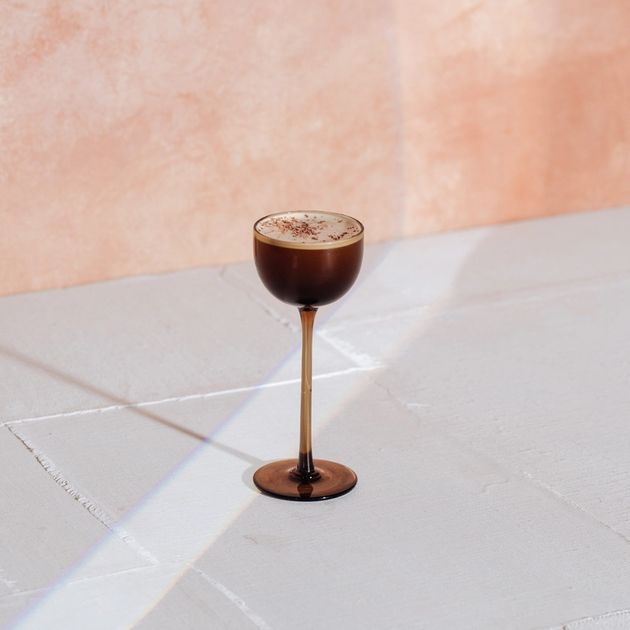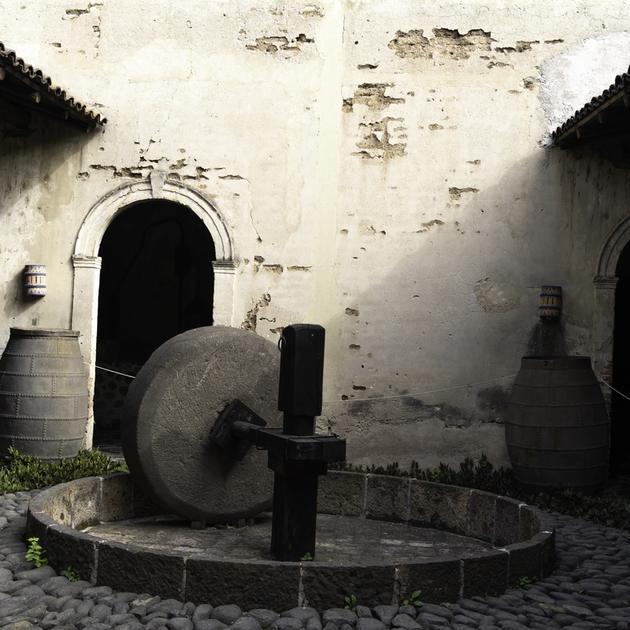Smoky, Fruity, Delicious
Despite the fact that the ingredient lists for these two spirits are awfully similar, it would be nearly impossible to confuse their tastes.
Tequila tastes like, well, tequila. It really just tastes like the “alcohol” portion of a margarita, and that’s about it. Of course, the taste will vary depending on the type of tequila, but this goes for every liquor. Tequila tastes like body shots, margaritas, and a wild party.
Mezcal, on the other hand, can’t simply be described as a certain taste. Why not, you ask? Because Mezcal offers a whole experience. Mezcal sends your taste buds on a magical adventure through the mystical hills of small towns throughout Mexico. It’s a rollercoaster ride for sure, and the only reason you shouldn't do up your seat belt is that you won’t want to stop your feet (and taste buds) from dancing.
Mezcal is smoky, fruity, and outright delicious. But not in an “in your face” way, more like in a sophisticated and reserved, yet still exciting type of way. If it’s hard to put into words, it must be pretty good, right?
Complex Drink, Complex Thoughts
The flavor nuances of Mezcal are what makes it such a beautiful, complex spirit.
But the thing is: since the taste of Mezcal is so complicated, it can be hard to convey its magic to a newcomer. We promise to try our very best.
There are three delightful flavor profiles we get to enjoy when sipping a glass of Mezcal: earthy agave, a complex aroma, and a smooth finish.
Earthy agave comes from roasted agave hearts, accompanied by caramel notes and spices like ginger and cinnamon. The complex aroma features citrus, tropical fruits like pineapple and pear, and other bright notes that everyone can enjoy. Finally, Mezcal has a silky-smooth finish, leading with a hit of agave smoke and leaving us with subtle layers of sweet fruit and baking spice.
Many are pleasantly surprised to learn that for a spirit so complex, Mezcal Rosaluna only has three ingredients: 8-year-old agave, water, and lots of love. Yep, that’s right. There’s beauty in simplicity and Mezcal does it perfectly. It’s made with a lot of magic, and none of the bad stuff.
It’s All about Location
Location, location, location. You may have heard this phrase before in business lingo. Well, Mezcal Rosaluna means serious business, too.
One of the main differences between tequila and Mezcal is that while they both hail from Mexico, they come from different regions. In the same way that real champagne comes from France and true scotch is made in Scotland, real tequila and true Mezcal have different “homes” of their own. What sets a great Mezcal apart has a lot to do with the specific region it comes from.
Both tequila and Mezcal are made from agave plants. Agave carries with it the characteristics of the terroir it is grown in, just like wine varietals. Agave from different regions will have its own unique flavor profile, distinct to the environment it was grown in.
Mezcal Rosaluna is made in the beautiful hills of Oaxaca, in the town of Santiago Matatlán. Oaxaca is lovingly referred to as “The Capital of Mezcal,” and for a good reason: it produces the best Mezcal. This is probably why Oaxaca happens to produce a whopping 90% of the world’s Mezcal supply. Outside of Oaxaca, the towns of Durango, Guanajuato, Guerrero, Tamaulipas, and a few others are also small producers.
Tequila mainly comes from Jalisco, a state northwest of Oaxaca. Tequila (as well as Mezcal) is protected by an appellation of origin status; it must be produced in a distillery in either Jalisco or specified regions of Guanajuato, Michoacan, Nayarit, and Tamaulipas.
Let’s Talk about Variety
Have you ever heard that variety is the spice of life? It’s a good little saying, and it applies here as well.
The variety we’re talking about today is different types of agave plants. There are nearly 200 agave species in total. Tequila can only be made from one kind: blue (weber) agave. Mezcal can be made from up to 30 varieties of agave, with espadín being the most common.
It’s this flexibility and versatility that allows Mezcal to come in so many wonderful varieties.
Artesanal Vibes
Both tequila and Mezcal start with agave, but it’s in the production process that these two spirits begin to go their separate ways.
Once the agaves have been harvested, they need to be roasted in order to transform the carbohydrates and starches into fermentable sugars. Tequila is typically made industrially, while Mezcal most often uses traditional methods.
The tequila production process involves steaming the heart (or piña) of the agave plant in above-ground ovens and distilling the liquid into copper pots.
Mezcal is cooked (slow-roasted) in underground pits using pinewood logs. Here at Rosaluna, we cover the fire with stones and carefully pile on the agaves, making sure to use the perfect heating point that will generate constant and uniform roasting. This patient process can take up to five whole days but is well worth the wait—it’s what adds that distinct and delicious note of cooked, smoky agave to the final product.
Is Mezcal better than tequila? It’s handcrafted using Mexican traditions that have been passed down and perfected for centuries—how could it not be?
The Breakdown, Baby
Mezcal is better. If you’re not yet convinced, that’s fine; we’re not finished.
Mezcal must be made from 100% agave; it’s regulation. Tequila, on the other hand, can legally be made with a minimum of 51% agave. This results in tequila being mixed with other fillers such as different alcohols, non-agave sugars, and who knows what tf else. Perhaps you’ve heard a word on the street that Mezcal is healthier for you—this is because it only has room for the good stuff and quite literally can’t have any of the bad stuff.
People generally just feel better after a night of drinking Mezcal compared to a night of drinking tequila. Mezcal is such a marvelous flavor experience on its own that it's easy to drink neat and skip the extra juice, chasers, etc. Oh, and drinking it neat is also the way it's intended to be enjoyed, BTW. Mezcal Rosaluna is vegan, gluten-free, zero carb, plant-based, non-GMO, and carbon neutral. Like we said: none of the bad stuff.
The thing is, people just don’t know enough about Mezcal. Mezcal is relatively unfamiliar to most people, but a lack of familiarity shouldn’t keep you away. A highly established, sophisticated, and mature spirit like Mezcal is too good to go unnoticed, even if it can be a little intimidating at first.
Mezcal is a big hug, a familiar face, and a night spent under the moonlight. It’s pure magic, and it’s definitely better than tequila.
Sources:
What Does Tequila Taste Like | The Spruce Eats
A Field Guide to the Agave Used For Mezcal | Drink Hacker
Why Is Blue Weber the Only Agave in Tequila? | Thrillist
These are the new rules governing mezcal | Drink Magazine
How to Drink Mezcal, According to an Oaxacan Bartender | Vine Pair







